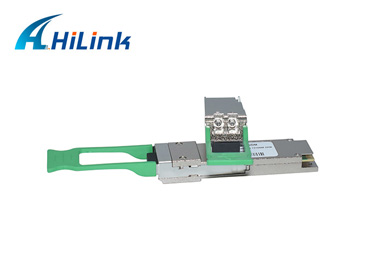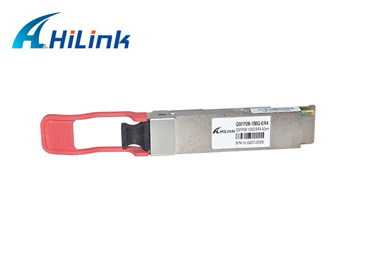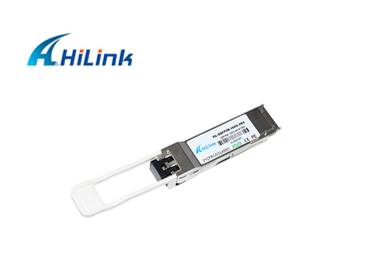How to Use Fiber Optic Transceivers in the Network?
Mar. 24, 2023
The fiber optic transceiver can easily integrate the copper cable-based wiring system into the fiber optic wiring system, which has strong flexibility and high-cost performance. Typically, they convert electrical signals to optical signals (and vice versa) to extend transmission distances. So, how to use fiber optic transceivers in the network and correctly connect them to network devices such as switches and optical modules? This article will detail it for you.
How to use fiber optic transceivers?
Today, fiber optic transceivers have been widely used in various industries, including security monitoring, enterprise networks, and campus LANs. Optical transceivers are small in size and take up little space, so they are ideal for deployment in wiring closets, enclosures, etc. where space is limited. Although the application environments of fiber optic transceivers are different, the connection methods are essentially the same, and the common connection methods of fiber optic transceivers are described below.
Use alone
Usually, fiber optic transceivers are used in pairs in the network, but sometimes they are used individually to connect copper cabling to fiber optic equipment. As shown in the figure below, a fiber optic transceiver with 1 SFP port and 1 RJ45 port is used to connect two Ethernet switches, and the SFP port on the fiber optic transceiver is used to connect to the SFP port on switch A, the RJ45 port is used to connect to the electrical port on switch B, the connection method is as follows:
1. Use a UTP cable (a network cable above Cat5) to connect the RJ45 port of switch B to the electrical port on the fiber optic transceiver.
2. Insert the SFP optical module into the SFP port on the fiber optic transceiver, and then insert another SFP optical module into the SFP port of switch A.
3. Insert the fiber optic jumper into the fiber optic transceiver and the SFP optical module on switch A.
100G QSFP28 CWDM4
Use in pairs
A pair of fiber optic transceivers are usually used to connect two network devices based on copper cabling to extend the transmission distance. This is also a common scenario for using fiber optic transceivers in networks. The steps of how to use a pair of fiber optic transceivers with network switches, optical modules, fiber optic jumpers, and copper cables are as follows:
1. Use a UTP cable (a network cable above Cat5) to connect the electrical port of switch A to the RJ45 port of the optical transceiver on the left.
2. Insert one SFP optical module into the SFP port of the left fiber optic transceiver, and then insert another SFP optical module into the SFP port of the right fiber optic transceiver
3. Connect the two fiber optic transceivers with fiber optic jumpers.
4. Use a UTP cable to connect the RJ45 port of the fiber optic transceiver on the right to the electrical port of switch B.
Note: Most optical modules are hot-swappable, so there is no need to turn off the power of the fiber optic transceiver when inserting the optical module into the corresponding port. However, it should be noted that when removing the optical module, you need to remove the fiber jumper first; insert the fiber jumper after inserting the optical module into the fiber optic transceiver.
Precautions for Using Fiber Optic Transceivers
Fiber optic transceivers are plug-and-play devices, and there are still some factors to consider when connecting them to other network devices. It is best to choose a flat, safe place to deploy the fiber optic transceiver, and it is also necessary to leave some space around the fiber optic transceiver for ventilation.
The wavelengths of the optical modules inserted into the fiber optic transceivers should be the same. That is to say, if the wavelength of the optical module on the optical fiber transceiver at one end is 1310nm or 850nm, the wavelength of the optical module on the optical fiber transceiver at the other end should also be consistent. At the same time, the speed of the optical fiber transceiver and the optical module must also be the same: the gigabit optical module must be used together with the gigabit optical transceiver. In addition, the types of optical modules on the fiber optic transceivers used in pairs should also be the same.
The jumper inserted into the fiber optic transceiver needs to match the port of the fiber optic transceiver. Usually, the SC fiber optic jumper is used to connect the fiber optic transceiver to the SC port, while the LC fiber jumper needs to be inserted into the SFP/ SFP+ ports.
It is necessary to confirm whether the fiber optic transceiver supports full-duplex or half-duplex transmission. If a fiber optic transceiver that supports full-duplex is connected to a switch or hub that supports half-duplex mode, severe data packet loss will result.
The operating temperature of the fiber optic transceiver needs to be kept within an appropriate range, otherwise the fiber optic transceiver will not work. For fiber optic transceivers from different suppliers, its parameters may be different.
How to troubleshoot and solve fiber optic transceivers?
The use of fiber optic transceivers is very simple. When applying fiber optic transceivers to the network, if they do not work properly, troubleshooting is required. The following six aspects can be used to troubleshoot and solve:
1. The power indicator light is off, and the fiber optic transceiver cannot communicate.
Solution:
Make sure the power cord is connected to the power connector on the back of the fiber optic transceiver.
Connect other devices to the electrical outlet and check that the electrical outlet is receiving power.
Try another power adapter of the same type that matches the fiber optic transceiver.
Check whether the voltage of the power supply is within the normal range.
2. The SYS indicator on the fiber optic transceiver is off.
Solution:
Typically, an unlit SYS indicator on a fiber optic transceiver indicates that internal components on the device are damaged or not functioning properly. You can try restarting the device. If the power supply does not work, please contact your supplier for assistance.
100G QSFP28 Optical Transceiver
3. The SYS indicator on the fiber optic transceiver keeps flashing.
Solution:
An error has occurred on this unit. You can try restarting the device. If it doesn't work, remove and reinstall the SFP optical module, or try to replace an SFP optical module. Or check whether the SFP optical module matches the fiber optic transceiver.
4. The network between the RJ45 port on the fiber optic transceiver and the terminal equipment is slow.
Solution:
There may be a duplex mode mismatch between the port on the fiber optic transceiver and the port on the end device. This happens when using an auto-negotiating RJ45 port to connect to a device whose fixed duplex mode is full duplex. In this case, simply adjust the duplex mode on the end-equipment port and the fiber optic transceiver port so that both ports use the same duplex mode.
5. There is no communication with the device connected to the fiber optic transceiver.
Solution:
The TX and RX ends of the optical fiber jumper are reversed, or the RJ45 port is not connected to the correct port on the device (please pay attention to the connection method of the straight-through cable and the crossover cable).
6. On and off phenomenon
Solution:
It may be that the optical path attenuation is too large. At this time, the optical power meter can be used to measure the optical power at the receiving end. If it is near the receiving sensitivity range, it can be basically judged that the optical path is faulty within the range of 1-2dB.
It may be that the switch connected to the fiber optic transceiver is faulty. At this time, replace the switch with a PC, that is, the two fiber optic transceivers are directly connected to the PC, and both ends are PING. If there is no intermittent connection, it can be basically judged as a switch failure.
It may be that the optical fiber transceiver is faulty. At this time, you can connect the two ends of the optical fiber transceiver to the PC (not through the switch). Speed, if the speed is very slow (file transfer below 200M takes more than 15 minutes), it can be basically judged as a failure of the fiber optic transceiver.
Summarize
Fiber optic transceivers can be flexibly deployed in different network environments, but their connection methods are basically the same. The above connection methods, precautions and solutions to common faults are just a reference for how to use fiber optic transceivers in your network. If there is a failure that cannot be solved, please contact your supplier for professional technical support.














